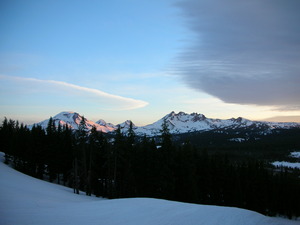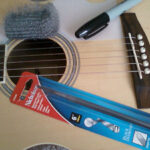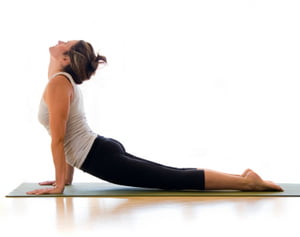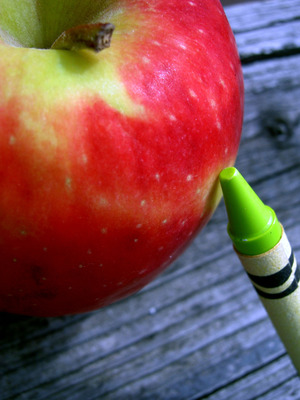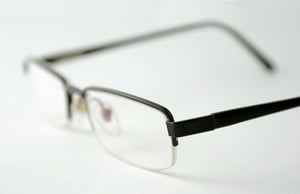Not only is backpacking a great way to get outdoors and see parts of the country most will never see, but it’s also a great way to relieve stress and a fun way to get in shape. If you’ve never backpacked before just learning what gear to use and how may seem like a daunting task, but fret not, with this guide you’ll be cruising the trails in no time
The first mistake I see every beginner make is to take too much gear and clothing. Too much gear means too much weight and an almost guarantee that you won’t have a good time. Look at every item you’re going to put in you pack and ask your self “Do I really need to carry this with me?” Experience helps, but looking logically at your pack weight can really stream line your load and literally lighten your step. I’ve always heard that a person can carry a quarter of their body weight comfortably. Who ever thought this was true is crazy. I weigh 220 pounds at 6’2″, a quarter of my body weight is 55 pounds. I’ve carried 55 pounds before and it’s anything but comfortable. I try to keep my pack weights around 30 pounds, that includes food and water. With some tips you can have a comfortable pack weight. Outline bellow are the fundamental things you need to take as well as some tips to eliminate excess weight.
The Backpack – capacity depends on trip length. For an overnighter you won’t need more that 3200 cu. in. capacity. As the numbers of days (and nights) increase so will the need for a larger pack. With many models of ultra-light packs on the market these days look for one that weighs little but feels comfortable on your back. Before purchasing your pack fill it with weight in the store, they should have sand bags available, try it on and walk around.
The Tent – This is a great place to loose weight in your pack. Take a tent of appropriate size for your group. If it’s two people take a two person tent. Lugging a six person tent up hills in your pack is a sure way to learn to dislike backpacking. Before leaving set up your tent so you know how to do it in the backcountry and seal the seams of the rain-fly with a commercial sealant.
The Sleeping Bag – This is an area of much controversy. I believe, however that it is very simple. Manufacturers give their bags a comfort rating based on degrees Fahrenheit. It is important to understand that these ratings are entirely subjective. My first trip into the Sierra’s I took a bag rated for 25 degrees, the night temperature rarely dropped below the mid 30’s but I was freezing every night. From that point on I always took a bag rated for several degrees colder than I know it’s going to be. An excellent addition to any sleeping bag is a liner. You can buy cheep fleece liners that will add an additional 10 degrees of warmth to any bag. They weight next to nothing and take up very little room.
Boots – This is another area of controversy. A current trend of thought is that the ankle needs support while hiking. While this is true to an extent, boots are heavy and often uncomfortable. I only wear boots in three situations: 1) when I will be hiking off-trail or bushwhacking. 2) When my pack weight exceeds 35 pounds and 3) when I will be crossing streams and rivers or any time there is the potential for slippery terrain. The rest of the time I wear running shoes or trail shoes. Either way I always carry a pair of Tevas or Chocos with me as camp shoes.
The Sleeping Pad – This is one item that I do not skimp on. A nice thick self inflating air mattress such as a Therma-rest will help you sleep better, wake up refreshed and ready to keep hiking.
Clothes – This is the number one area I see beginners making mistakes. While this can be seasonally dependant, I’ll make the assumption that most beginning backpackers will take trips in the summer. I live in the Pacific Northwest where even during the summer weather can be unpredictable and change with out a moments notice; however I will discuss some general clothing needs. Things to always have with you include a rain jacket, rain pants, a hat and a jacket. Even if you don’t need the jacket you can fold it up and use it as a pillow. One last thing to consider is that you are going to sweat and stink, go with it. Taking a fresh pair of clothes for every day is just going to give you a back ache. Instead bring one pair of clothes to wear during the day while hiking and another to change into once you get to camp. If you’re camped near water (which you should be) get in and rinse off before changing. Also rinse your clothes and hang them to dry overnight.
Food – you will pack too much food, I still do. This area is one that is difficult to get correct. The problem is; food is very heavy. The best mentality is simply to pack less than you think you will need. Also pack things that are easy to eat i.e. require little cooking. My favorite things range from trail mix, beef jerky, chocolate bars nuts, bagels and peanut butter to oranges and apples. There are several meats, such as pepperoni and dried salami, which are great for packing and are a delicious treat as well.
Cooking gear – If you follow number 7 above, this may or may not be a necessity. I personally never take a stove, cook pot or fuel with me. Not only do I save some weight in my pack but I never have to cook at night. Even better I never have to do dishes. I simply snack through the night and spend the rest of my time taking pictures and enjoying the scenery.
Water filter or purifier – There are so many choices on the market I won’t go into depth here. I will tell you this however: in one way or another, purify any water you drink in the backcountry. There are bacteria, virus and protozoa found in the waterways of the backcountry. By purifying the water you eliminate this threat. As some one who has suffered gastro-intestinal mishaps from drinking unpurified water, I can tell you, it’s far more worth it to purify your water than to suffer the consequences.
Headlamp – Yeah they look dorky, but this in one of the simplest and best camp tools ever invented.
Camera – You will want to remember your hike; take a camera, have it accessible and take as many pictures as you can, you’ll never regret it.
A book and/or Journal – Sometimes it will get dark long before you’re ready for bed, this way you can read and/or write while listening to the sounds of nature all around you. Hopefully this list is helpful to you. If you don’t have all of this gear, or the budget to purchase it, contact local outfitters in you area to enquire into gear rentals. Renting is a great way to use equipment and figure out what you like and don’t like. It took me many, many trips into the backcountry to learn what to take and what I could leave behind. Due to this process I now find myself hiking with a lighter pack which enables me to focus more on enjoying myself than lugging a quarter of my body weight uphill. Remember, pack frugally, pack less, have fun and happy trails!
